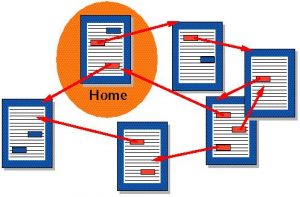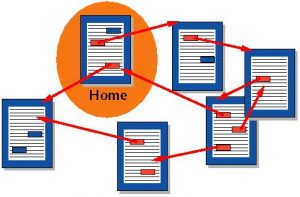

Hypertext is, to the general public, a feature of digital texts. However, there has been attempts to incorporate Hypertext into non-digital forms of media. For example, Michael Gordon presented ‘James Joyce’s Ulysses in Hypermedia’. “Utilizing the rich potential of multimedia, Groden’s idea was to incorporate maps, exegeses, episode summaries, and annotations, as well as critical essays on Joyce and hypertext. (294). Hypertext seems to be breaking out of it’s exclusive home of digital texts. Use of Hypertext within print books, I think does exist, but it takes a different form. Within digital texts it manifests itself as a thin blue line underneath a word or phrase, indicating a link to somewhere else. Typically, it means that the underlined phrase is important or can allow you to dig deeper into the topic your reading about. However, print texts it functions like annotations on Wikipedia. Following the end of a sentence there will be a small number, relating to a certain source referenced at the base of the page. That, in my opinion is the closest print text can get to hypertext.
Hypertext however, can be very beneficial. It allows an interweaving of texts together, tying more and more information together. It can allow a reader to have access to much more information within a more confined digital space. In the case of Ulysses, hypertext can be very helpful in keeping the reader informed within the universe. Say the writer mentioned the name of a character or a god that the reader doesn’t recognize. A hyperlink on that character or gods name can redirect the reader to the information needed to tell them who the character is. They can then go right back to their story with their new information. However, the downside is that an extensive amount of hypertext can be very visually overwhelming. Looking at a document that is filled almost entirely with that small, thin blue line can be a very intimidating sight for a reader. It can give the reader a sense of density in the reader, and that could scare them away from your text. See? That much hypertext is both unpleasant to look at but also could scare a reader away.
Barnet, Belinda, and Darren Tofts. “Too Dimensional: Literary and Technical Images of Potentiality in the History of Hypertext.”